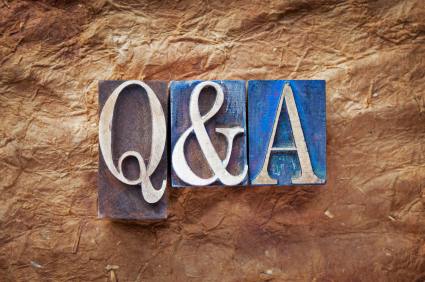Email 3: How to Deal With A Biased Reporter (Pt. 2)
Many people believe that “objective” journalism is going the way of the dinosaurs, only to be replaced by a more insidious form of “opinion” journalism. Although the truth may be a bit more complicated than that—early American newspapers, for example, often had obvious agendas—there’s certainly a lot of evidence to support that trend.
Yesterday, I began responding to a reader named Christopher, who wrote:
“You’ve covered how to deal with aggressive reporters, perhaps a refresher on how to deal with clearly biased reporters is in order?”
Yesterday’s story focused on dealing with biased reporters during live exchanges; today’s will focus on dealing with them during edited interviews.

EDITED INTERVIEWS WITH A BIASED REPORTER
Edited interviews are tricky, because you can do (almost) everything right and still have your words taken badly out of context. And if you do make a mistake—something I refer to as a “Seven-Second Stray,” you’ll be in trouble.
So before you dive in and agree to speak to a biased reporter, you’ll need to ask yourself whether you should even do the interview in the first place. There are three primary considerations when contemplating that question:
1. Is the reporter likely to publish the story regardless of whether or not you agree to the interview?
If so, I often argue that it’s best to participate in the interview. That’s because of something I call “The Rule of Thirds,” which states that there are three voices in many news stories—yours, your opponent’s, and the reporter’s. If you refuse the interview, that means you’ll likely go 0-for-3 in the story. But if you participate, you at least have a shot of going 1-for-3. Plus, you won’t look like you’re hiding behind a suspicious “no comment.”
2. How will it look to the audience if you don’t?
Remember that reporters are often the mere conduits through which you reach the audiences that matter most. So forget the biased reporter for a moment and ask yourself how it would look to your audiences if you decide against commenting. Is the reporter so obviously biased that your supporters wouldn’t hold your absence against you? Or would your audiences expect you to at least try to get your viewpoint across?
3. How does the reporter treat sources he or she disagrees with?
Some reporters, though “biased,” can also be fair. Sound paradoxical? Consider yesterday’s example of Bill O’Reilly and the liberal book author. Although O’Reilly was “biased” against the professor’s viewpoint, he also allowed him a forum to articulate his views. If the reporter has a strong point-of-view but represents opposing viewpoints fairly, you should be more inclined to agree to the interview.
NEXT STEPS
The three questions above are all “big picture” strategic points, not tactical ones. So assuming you’ve answered those three questions and decided to proceed with the interview, your next step is to read two more posts, which will help you deal with the actual interview:
– This article will help you work the journalistic chain of command if you’ve been wronged in a story.
– And this one will help you avoid being misquoted by reporters.
Like our blog? Don’t go yet! Please like us on Facebook here.



Brad what about the idea of “Reporting on the Reporter” by videotaping the interview yourself, and then posting the entire thing online to show the context of your quotes or whatever else. (I did a post on it here – http://bit.ly/SSNdcq)
I love the idea of doing this as an insurance policy. If you need to, you now have video evidence you can show and use to explain to your key audience/constituents what REALLY happened versus just trying to complain and claim you were misquoted after the fact.
Sure it will likely annoy reporters and put them on their guard, because now you could make them look bad by pulling back the curtain on the entire interview. But if you know ahead of time the reporter is likely to just try and do a “hit piece” on you anyway, maybe it makes sense to do this as a way to cover your bases. Plus it keeps the reporter on his/her toes and maybe they don’t try and manipulate you as much.
Just tell the reporter you agree not to air any of the video you shoot unless after the story comes out, you feel you’ve been misrepresented or taken out of context in the way your comments were edited/framed within the actual story.
And if the reporter refuses to participate, he or she then has to explain in his/her story why you weren’t interviewed. And then it makes the reporter look bad – what’s he or she afraid of?
I know it’s controversial and might make you unattractive to other journalists, and that’s why I’d only use this device sparingly and only for interviews/stories you think could be controversial and make you look bad.
What do you think?
John,
Thank you for your thoughtful comment! I agree with you completely, especially with your caveat at the end about recording interviews with reporters only sparingly.
I wrote an article in early 2011 on this topic: thank you for giving me an excuse to unbury it! It’s here: https://www.throughlinegroup.com/index.php/2011/01/17/should-you-tape-your-media-interviews/.
Thank you for the terrific link, as well. Great story.
Best wishes,
Brad
[…] If you find you have been misquoted and it is minor, don’t worry about it. If you feel you’ve been misrepresented or grossly misquoted, you may want to reach out to the media member politely through an email and ask about the incident. Just remember that media members are not obligated to print everything you say. They can cut and paste to present the interview however they please. Misquoting is not contextual—it is just verbatim. Stay on message, be brief, be responsive and cooperative. Here are some tips from media trainer Brad Phillips on how to deal with a biased reporter. […]